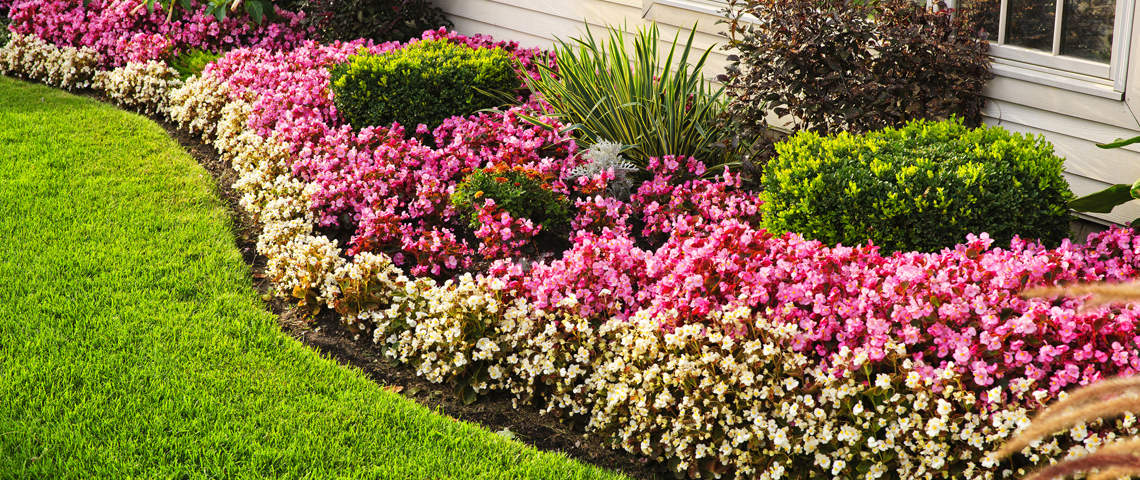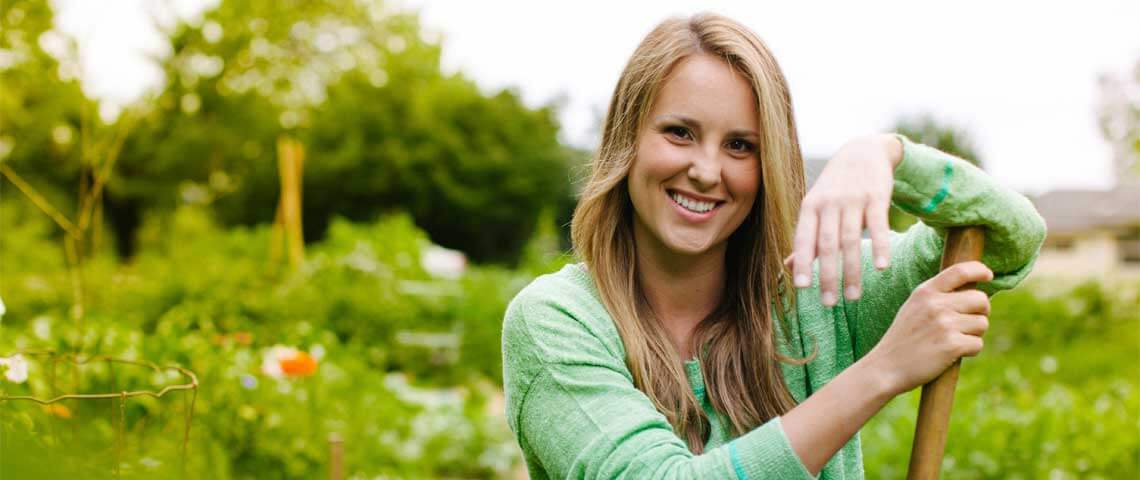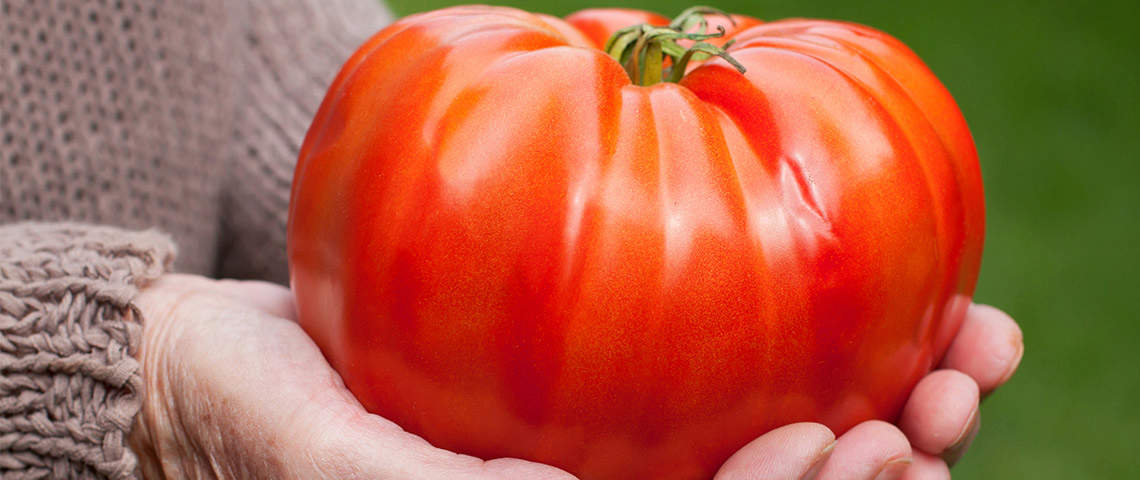Lawn and Garden Term Definitions
PENNINGTON LAWN & GARDEN GLOSSARY
A | B | C | D |E | F | G | H |I |J |K | L | M | N | O | P |Q | R | S | T |U |V | W |X |Y |Z
It's been said that gardeners speak a language all their own. Whether you're a novice gardener or an old pro, these lawn and garden definitions can add to your understanding and your enjoyment as you learn and grow.
acidic – the state when a substance, such as soil, measures between 0.0 and 7.0 on the pH scale, where 0.0 is the most acidic. When soil is too acidic, many plants can't thrive. Soil amendments, such as lime, make soil less acidic. See also: alkaline, lime, soil pH.
alkaline – the state when a substance, such as soil, measures between 7.0 and 14.0 on the pH scale, where 14.0 is the most alkaline. Many plants suffer nutrient deficiencies in high-alkaline soil. Amendments, such as sulfur, reduce soil alkalinity. See also: acidic, amendment, soil pH.
amendment – a substance added on or incorporated into soil to improve its quality and increase its productivity. Amendments can restore pH balance, increase nutrient availability, improve soil structure, add nutrients and deliver other benefits. See also: lime, soil pH.
annual – a plant that naturally completes its life cycle within one year. Annuals grow from seed, flower, produce seed and then die — from root to tip — each year, regardless of climate. Some annuals self-seed and new plants grow from the seeds the next year. See also: biennial, perennial.
biennial – a plant that takes two years to complete its natural life cycle. The first year, it starts from seed and grows leaves only. The second year, it grows larger and flowers, sets seed, and then dies. Biennials often establish a cycle of self-sowing that gives the illusion of longer life. See also: annual, perennial.
blight – a disease that creates brown, circular patches in the lawn; if left untreated, it will grow to affect large areas of grass. Controlling this unsightly condition requires that you irrigate properly and apply controls, such as GardenTech Daconil Fungicide.
complete fertilizer – this term invites an obvious question: Is there an incomplete fertilizer? The answer is yes. Complete fertilizers contain all of these major nutrients required for turf growth: nitrogen, phosphorus and potassium, and possibly various minor nutrients. But, at times, a single-ingredient fertilizer, such as Ironite Plus Lawn & Plant Food, which contains iron, is exactly what your lawn needs to green up and thrive.
compost – the soil-like substance formed when organic materials, such as leaves, grass clippings and vegetable scraps, decompose. Added to soil, compost helps improve soil structure, replenish nutrients and deliver other benefits. See also: amendment, organic matter.
cool-season grasses – although this term conjures images of turf varieties you'd want to rest your head on in the summer months, it actually refers to grass types that thrive during cool weather. Cool-season grasses include turf type tall fescue, fine fescue, bentgrass, bluegrass, and ryegrasses.
deadheading – the process of removing old, spent flower blossoms to encourage plants to continue blooming. The entire “dead head" of the flower — its petals and base — is removed by hand or pruners before the flower can produce seed. Preventing seed production keeps the plant's energy focused on producing more flowers.
drought tolerant – the ability to endure the stresses of prolonged dry periods on a regular basis, without lasting damage. Once established in the garden or landscape, drought-tolerant plants can bounce back from lack or loss of water and return to good health.
fertilizer – a natural substance or commercial product that provides plant nutrients when applied to soil or plants. Fertilizers may be liquid or granular and release nutrients in different ways and rates. See also: NPK, nutrients.
- balanced fertilizer – a fertilizer that contains equal percentages by weight of three important nutrients — nitrogen (N), phosphorus (P) and potassium (K) — with or without additional nutrients. An example is a 10-10-10 fertilizer.
- complete fertilizer – a fertilizer that contains all three primary nutrients — nitrogen (N), phosphorus (P) and potassium (K) — in any ratio, with or without additional nutrients. An example is a 22-23-4 fertilizer.
fertilizer burn – the scorch-like damage caused when plants are exposed to fertilizer concentrations beyond what they can process. If severe, fertilizer burn can kill plants.
fish emulsion – a natural, filtered liquid fertilizer derived from cleaned, heat-treated fish. Used properly, fish emulsion delivers nutrients gently, without risk of fertilizer injury. See also: fertilizer burn.
forcing – the process of manipulating cold and warmth to mimic seasonal changes and cause plants to come out of dormancy and bloom before they naturally would. Tulips and other bulbs are often forced so that indoor bulb gardens bloom in midwinter.
frost date – the expected date of your area's last spring frost or first fall frost, based on historical data. The period of frost-free days between the two dates is the length of your normal growing season. Your local county extension office can help you determine your region's frost dates.
fungicide – the first three letters of this word spell fun, but the truth is, fungicides are serious business. Controlling damaging turfgrass fungal diseases, such as dollar spot, brown patch and pythium, require the heavy-hitting power of products like GardenTech Daconil Fungicide, which prevents fungal disease from infecting healthy grass. Treat your turfgrass in late spring or early summer to inhibit and control lawn fungal problems.
gypsum – a mineral composed of calcium sulfate. Products featuring gypsum, such as Lilly Miller Garden Gypsum, loosen heavy clay soils and promotes drainage. Easy to apply, this garden gypsum also contains calcium and sulfur, and corrects salty alkaline soils.
harden off – the natural process that occurs when plants gradually acclimate to cooler temperatures. Indoor-grown seedlings are set outside for short periods in spring to harden off before being transplanted to the garden. Hardy outdoor plants naturally harden off as winter approaches. Anything that inhibits the process can jeopardize a plant's ability to tolerate cold. See also: hardiness, pruning.
hardiness – a plant's natural ability to withstand temperature extremes, especially winter lows, without added protection. Hardiness zones are geographic areas classified by temperature and climate data. Hardiness ratings, shown on plant nursery care tags, provide a range of upper and lower zones that show where the plant normally survives from year to year.
humus – spelling counts! Far from a food dip, humus — with only one 'm' — is soft, brown-black material that forms during the final stages of decomposition of animal and plant matter. Humus adds beneficial bacteria to turfgrass soil, encouraging strong growth.
hybrid – the offspring plant that results from crossbreeding two plants of different varieties, species or genera.
leaching – leaching occurs when rainfall or irrigation water flushes substances and nutrients through soil. Leaching is primarily performed to remove the buildup of harmful nutrients, including salt. After leaching, it's important to fertilize your lawn with nutrients that promote growth, such as nitrogen. This can be done by applying high quality lawn fertilizer, such as Pennington Full Season Lawn Fertilizer 32-0-5.
lime – a substance produced from natural limestone that's applied to or worked into lawn and garden soils to restore pH balance in acidic soil. Lime increases alkalinity so that nutrients are more available to plants. See also: acidic, alkaline, amendment, soil pH.
mycorrhizal fungi – natural microscopic organisms that live on plants roots in a mutually beneficial relationship that enhances root health and improves a plant's ability to take up water and nutrients. Mycorrhizae can be added to fertilizer and seed to help replenish soil.
nematicide – a pesticide, nematicide has a deadly ring to it. But you're unlikely to see its carnage, because it kills microscopic worms known as nematodes that, in large numbers, wreak havoc in turf by eating grass roots.
non-selective – a pest control that affects a broad spectrum of plants or animals rather than targeting a select type of weed, insect or other animal. For example, non-selective herbicides are plant controls that kill or injure all plant types, whether grass or broadleaf plants. See also: pesticide, selective.
NPK (also N-P-K) – the ratio of nitrogen (N), phosphorus (P) and potassium (K) indicated by three numbers on a fertilizer label. N-P-K numbers represent the percentages of these nutrients in a product, by total weight. See also: fertilizer, nutrients.
nutrient deficiency – a condition that occurs when a plant doesn't get enough of a necessary nutrient. Deficiencies can happen when the nutrient is in short supply in soil, for example, or when the nutrient is plentiful, but soil pH limits its availability to plants. Iron-deficient grass, for example, may turn yellow or pale green. See also: nutrients, soil pH.
nutrients – substances such as elements, minerals and vitamins that provide nourishment essential or beneficial to plant life or healthy growth. Some nutrients are required; others are helpful, but not essential. See also: fertilizer.
- essential nutrients – the nutrients that are absolutely necessary for plant life. Plants get three essentials – carbon, hydrogen and oxygen – from water and air, but rely on soil for other nutrients. Fertilizers replenish nutrients when soil becomes depleted.
- macronutrients – the essential nutrients plants need in the large amounts. The three primary macronutrients – nitrogen, phosphorus and potassium – are main fertilizer ingredients because plants need them in the largest quantities. See also: NPK.
- micronutrients – the essential plant nutrients needed in small quantities, also known as trace elements. Micronutrients such as iron, manganese and zinc often become unavailable in high-pH soil, and nutrient deficiencies result. See also: nutrient deficiency.
OMRI – acronym for the Organic Materials Research Institute, a nonprofit organization that reviews products intended for certified organic food or crop production. An OMRI-listed product has been reviewed and met the strict guidelines for certified organic food or crop production.
organic – a term used to describe substances that originate from living matter, whether plant or animal, and occur as a result of natural processes. Organic also describes gardening and lawn care styles and products that avoid man-made ingredients. See also: organic matter, synthetic.
organic matter – material derived from plants or animals, such as leaves, grass clippings or compost, that forms an important component of healthy soil. Organic matter can be used as a soil amendment. See also: amendment, compost.
ornamentals – plants used in gardens and landscapes primarily for aesthetics rather than for fruit or other edibles.
overseed – though it sounds like an instruction to throw down too much seed, to overseed means to sow seed in areas of your lawn that have become thin due to wear and tear, drought and insect or pest damage. Overseeding is also done during the cool months on warm-season grasses, including zoysiagrass and Bermudagrass, with cool-season perennial ryegrass for winter color. Overseeding is the easiest and least expensive way to thicken your lawn without replacing it.
perennial – a plant that naturally takes more than two years to complete its lifecycle. When grown within their hardiness zones, healthy perennials return on their own year after year, for several years. Grown outside their hardiness zones, they act like annuals and may die each year and not return. See also: annual, biennial.
pesticide – a substance used to control or eliminate undesirable plants or animals that are considered pests. Pesticides that target plants are known as herbicides, while pesticides that target insects or mites are known as insecticides and miticides, respectively. See also: selective, non-selective.
post-emergent – a herbicide designed to be applied to unwanted plants, such as weeds, after they emerge and can be seen above ground. See also: pesticide, pre-emergent.
pre-emergent – a herbicide, such as a crabgrass preventer, designed to be applied before weed seeds germinate and emerge from soil. See also: pesticide, post-emergent.
propagation – the process of multiplying plants through various means. New plants can be grown from seeds or other methods, such as stem and leaf cuttings or root divisions.
pruning – the process of using shears or a similar tool to trim, reshape or rejuvenate plants, particularly perennials, shrubs and trees. Proper timing of pruning is important to flowering, plant health and cold tolerance. See also: hardiness.
root vegetables – edible plants grown primarily for their enlarged roots. These include vegetables such as carrots, beets and parsnips.
seedling – a young, newly sprouted plant grown from seed rather than from a cutting or other plant part. See also: propagation.
selective – a pest control designed to target a specific, select type of plant, insect or animal, controlling a narrow spectrum of pests. For example, a selective herbicide is a plant control that targets only broadleaf weeds or only grasses, leaving the other plant type uninjured. See also: non-selective, pesticide.
sod
– sod refers to blocks, squares or strips of growing turf that are ready to plant on prepared soil. Sodding is a considerably more expensive turf option than planting grass seed. Nourish both seed and sod with Pennington Full Season Lawn Fertilizer 32-0-5.
soil pH – the measurement of the concentration of hydrogen ions in soil on a scale of 0.0 to 14.0, where 7.0 is neutral and lower numbers reflect higher concentrations. Soil pH affects how available nutrients present in the soil, including those nutrients added by fertilizers, are for plants to absorb. Soil testing confirms soil pH, and soil amendments can alter it. See also: acidic, alkaline.
sun exposure - the amount of sun a plant receives or requires each day. Plant tags and catalog descriptions usually include recommendations of the amount of sun exposure needed for optimal plant health.
- full sun– a minimum of six to eight hours of direct sun each day. In hot climates, full-sun plants may need protection from harsh, midday sun
- part sun – four to six hours of direct sun each day. Similar to part shade, this is used to emphasize the plant's need for sufficient sun. Part-sun plants often prefer morning and evening sun.
- part shade– four to six hours of sun each day. This is similar to part sun, but emphasizes the plant's need for sufficient shade. Part-shade plants also do well in areas with filtered or dappled shade all day.
- full shade – less than four hours of direct sun each day, but still receiving indirect light. This is not the same as dense shade, where few plants grow well.
synthetic – a term used to describe substances that do not occur naturally. Synthetic products don't rely on natural processes in the way organic products do, so they can offer more control and work more quickly when applied to plants and soil. See also: organic.
systemic – a pest control that is absorbed by one part of the plant, but then moves throughout the plant's system, so that all plant parts contain the pest-fighting ingredients.
thatch – not something used to make grass huts, this type of thatch is instead a condition where layers of dead grass stems become entangled with layers of living turf. Grass clippings are primarily water and should be returned to the lawn to increase overall health and reduce the amount of fertilizer applied. When thatch buildup is heavy, however, dethatching to remove excess dead growth is required for a healthy lawn.
topdressing – fashion-savvy folks might think this has to do with layered clothing, but it in fact refers to applying a thin layer of soil over a lawn. That soil layer can help with a variety of issues, including filling low spots in the grass, reducing thatch buildup, adding needed nutrients, and improving drought resistance and drainage.
transpiration – like humans, grass sweats, but it's called transpiration. During transpiration, moisture passes through the breathing pores of the grass known as stomata, resulting in the turf blades releasing moisture into the atmosphere. Transpiration is a normal function, but when the weather is dry and hot, grass can transpire quickly, which may result in wilting and the need for extra watering.
transplant – a plant that is relocated from one growing situation to another, including young plants started indoors and then moved outside. This also refers to the process of moving an established landscape plant to a new location. See also: transplant shock.
transplant shock – the stressed condition that can happen when a plant is relocated to a new growing medium or location. Proper planting and care help limit shock, and plant starter treatments help support plant health while new roots grow.
warm-season grass – grasses that actively grow during the summer months. These include zoysia grass and Bermudagrass.
Understanding lawn and garden terms can help guide you along the path to beautiful landscapes and productive gardens. Pennington and the full line of Pennington lawn and garden products are dedicated to helping you succeed every step of the way.
All trademarks are property of their respective owners.



